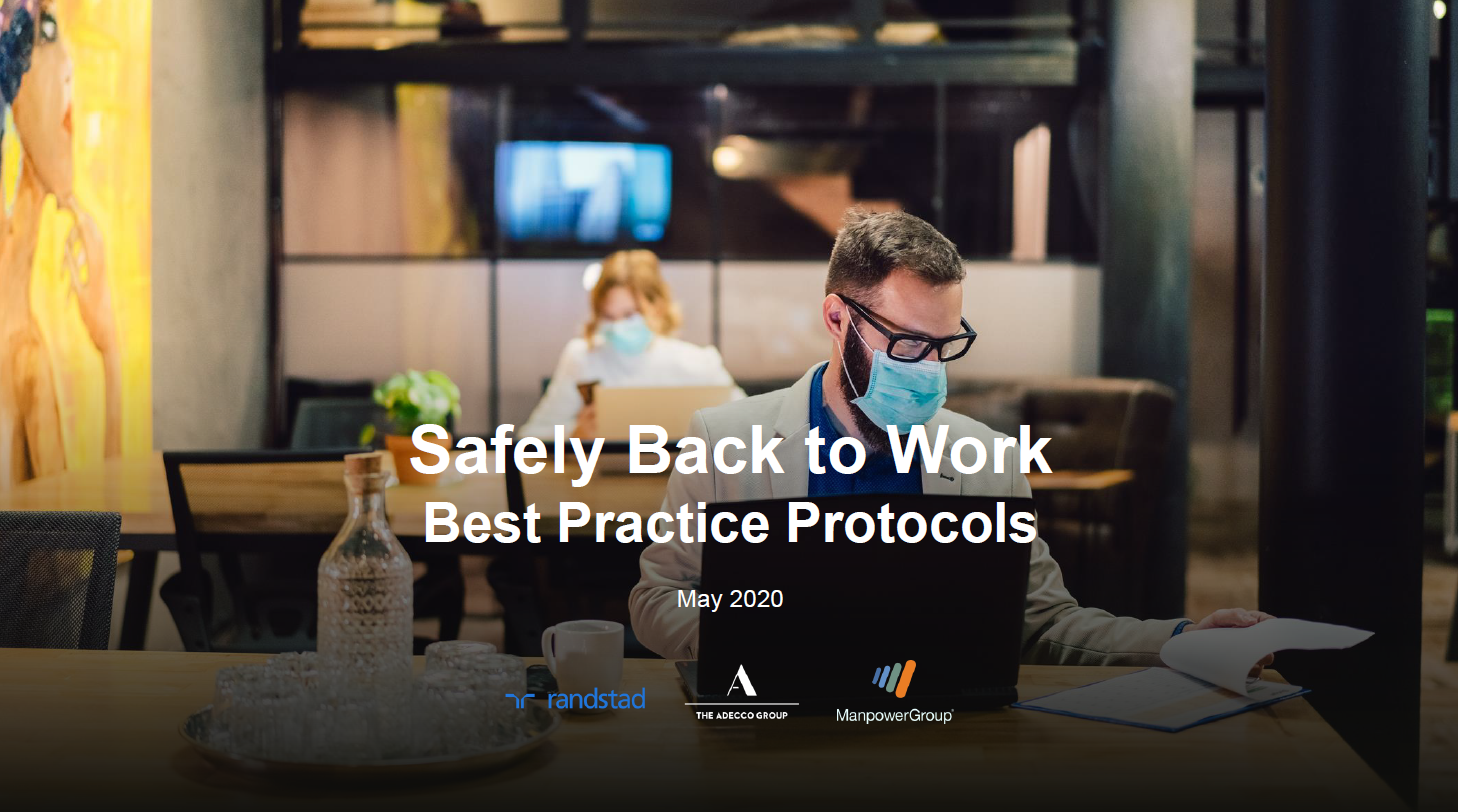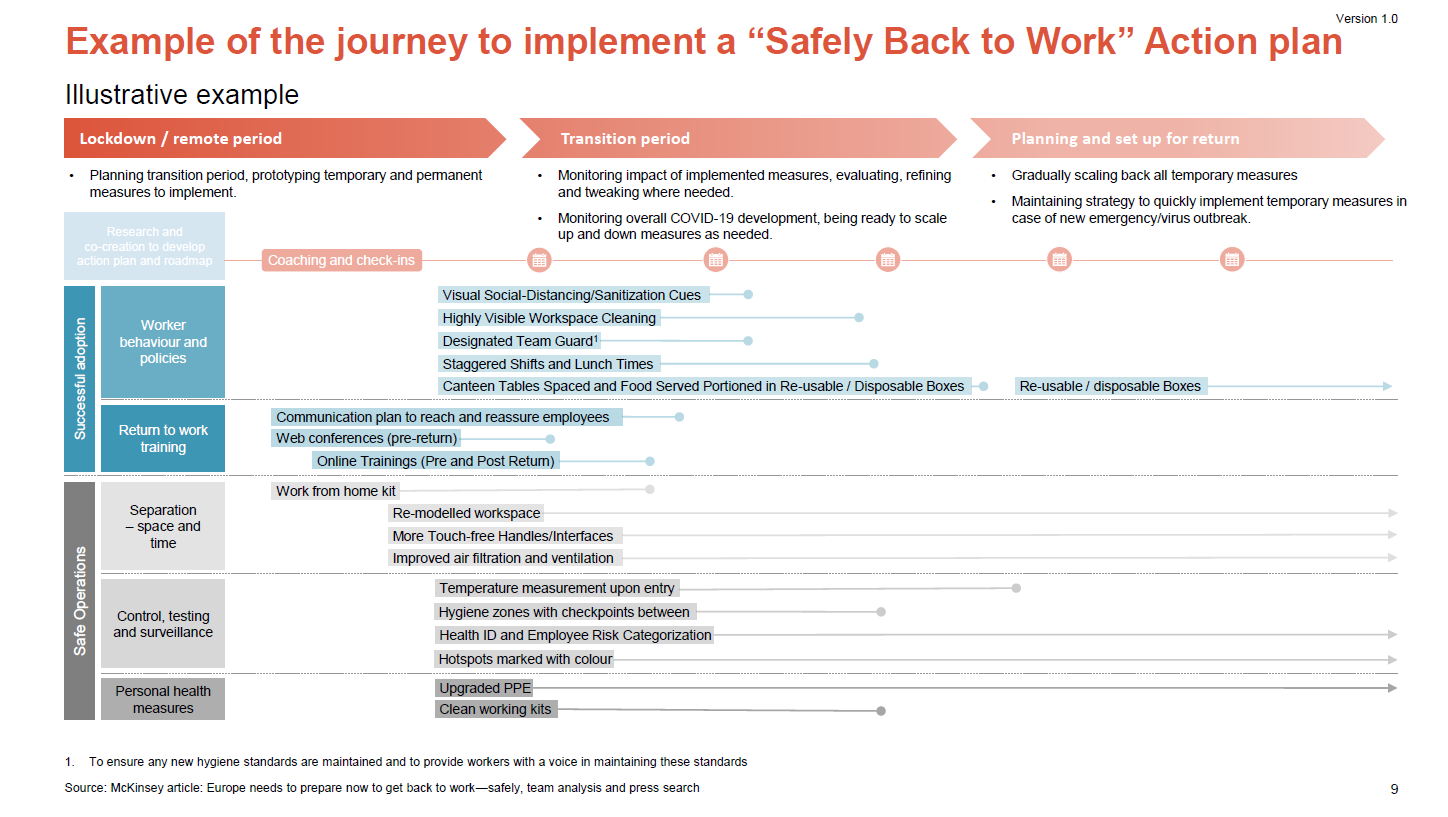We are living in challenging times. The full or partial lockdown measures implemented around the world have affected as many as 2.7 billion workers, which represents 81% of the world’s workforce. The COVID-19 pandemic is predicted to result in 195 million job losses worldwide. In Europe alone, 58 million jobs are believed to be at risk and similarly to the US, those most exposed are workers in the arts, entertainment, accommodation and food industries. Furthermore, a survey of 2,079 global executives suggests that despite the efforts of many governments to offset the economic damage, the global recovery will be slow and muted.

The need for cooperation
For countries, businesses and workers around the world, the disruption caused by COVID-19 has presented an unparalleled challenge. But as economies begin to gradually re-open, and businesses re-start their operations, it is important to ensure this is done in a safely manner.
Adjusting to a new reality will necessitate physical distancing and other strict measures. Clear guidelines, processes and protocols must be put in place to support both employees and employers. The health and safety of our colleagues, clients, and associates is our primary concern. Throughout the pandemic, we have supported our colleagues of whom 80% have worked remotely in order to facilitate a safe return to the physical workplace for our clients and candidates when the time is right.
Building on this commitment, and to help other organizations prepare for the post-pandemic world of work, last month the HR services industry formed an Alliance, spearheaded by the Adecco Group, Randstad, and Manpower Group urging other stakeholders such as employers, trade unions, and NGOs to join, and governments to support, stimulate and endorse these efforts.
Capturing and sharing good practice for the return to work
Together, the industry – as the world’s largest private sector employer and labour market expert – aims to make a vital contribution in getting ready for the ‘new normal’.
Drawing lessons from five sectors – transport and logistics, automotive, manufacturing and life sciences, construction as well as food – and analysing these in 13 countries, including France, Germany, and the United Kingdom, the Alliance has published a white paper that reviews over 400 health and safety protocols. This paper is intended to be a practical guide for companies and organisations in trying to re-open their business operations.
In order for this re-opening to be safe, however, companies need to develop an action plan that will cover these three areas:
#1. Hazard identification and control
Organisations should categorise the health hazards they can eliminate, while acknowledging other hazards can only be controlled by, for instance, changing the way people work to ensure physical distancing and by providing personal protective equipment.
#2. Assessment and development of a return to work roadmap and plan
Companies should involve employees in return to work planning and use lessons learned and best practices from other companies. Furthermore, it is important to communicate well and train managers and workers on how to apply the health and safety protocols.
#3. Implementation, measurement, evaluation and a feedback loop
Once the plan and a clear timetable are agreed, implementation will be more successful if it is genuinely a team effort across the whole organisation. As with planning, the implementation effort must also be holistic and include all levels and departments of the company.

In terms of the more concrete steps to avoid the spread of COVID-19 in the workplace, companies should be aware that:
• To avoid the health hazard in the workplace, and where possible, workers should be encouraged to work remotely, and communication should take place virtually.
• Communicating internally and externally is critically important. As a rule of thumb, over- rather than under-communicate. Be sure to select the most appropriate channels and tools to communicate on topics that are health-related such as critical hygiene rules or online training on worker safety and health.
• Sufficient quantities of appropriate PPE and sanitary products should be provided. Companies should encourage hand-washing breaks and organize periods outside the premises for fresh air.
• It is vital to establish and apply a rule of physical distancing that conforms with government requirements. Support workers’ compliance via communications and with physical markers on floors, walls, work areas, and chevrons in walkways.
• Physical barriers are key in reducing infection. These include transparent screens and taped-off areas to separate personnel from each other and from customers.
• Cleaning of all ‘touch points’ – door handles, banisters, lift buttons, taps, and break areas – is important and must be scheduled, systematic and very visible to employees.
• Any health monitoring, testing, and surveillance must comply with government workplace and privacy rules and any activities should preferably be in response to government requirements to monitor employee health.
• When it comes to infection reporting and control, companies should follow and apply procedures and advice published by either local or national government.
• On travel and logistics, organizations should plan on the basis that alternative working arrangements to compensate for travel will be in place for some time to come. Protocols should be drafted to define acceptable forms of transport for key on-site staff to, from and during work.
• To ensure business continuity, organisations should maintain a multi-disciplinary team approach to manage day-to-day and month-to-month operations and to update contingency plans for the safe and efficient running of the workplace as COVID-19 threat evolves.
• The company’s most senior leaders need to own the pandemic response effort and lead from the front. Delegating the executing of the pandemic response to health and safety colleagues, without giving them 100% backing and support, may lead to failure.
As many organisations are currently navigating their way from remote work or suspension of operations to working within the requirements of the new physical distancing economy, the white paper developed by the Alliance offers practical advice and examples of best practices that, if adopted quickly, will benefit both businesses and their workers.



